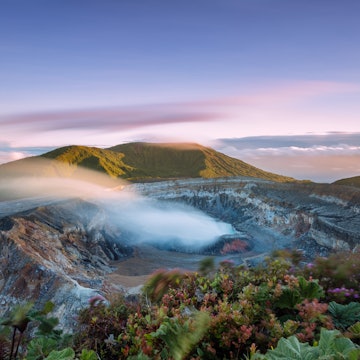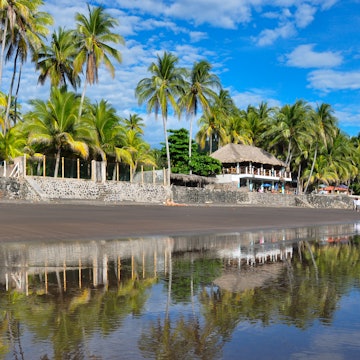

Catch the best waves in Central America's surf hot spots with this guide. Shutterstock
Central America is one of the most wave-blessed parts of the globe.
Swells roll in from the Pacific and the Caribbean Sea throughout the region, offering up everything from barrels to beefy beach breaks all months of the year. Costa Rica is justly known for its hedonistic surf-party towns fringed by coconut-strewn sands, while Panama has archipelagos of reef-ringed tropical islands and tube waves that work in the wet season.
El Salvador, meanwhile, beckons with powerful A-frames right by hippie beer shacks. And those are just the best-known spots.
Our guide to the best surfing spots in Central America has all you need to find the top spots to catch waves for all levels, from beginner to pro.
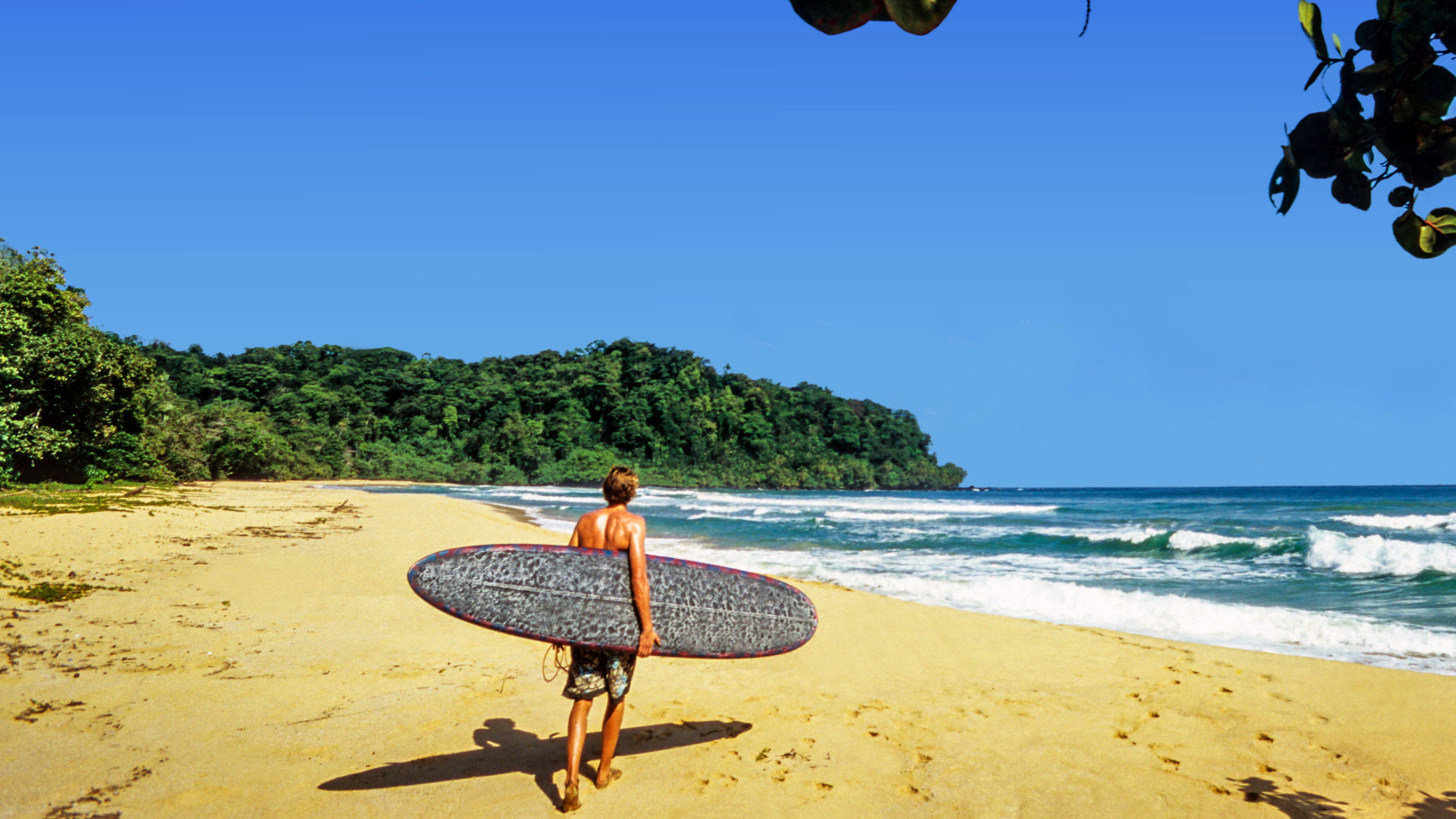
1. Bocas del Toro, Panama
Best for barreling waves on brochure-worthy beaches
There are so many overwater bungalows in Panama's Bocas del Toro these days that it can sometimes feel like the Maldives in the Caribbean. But it’s all that takes place on and under the water – boating, scuba diving and surfing – that makes this string of six populated islands, 50 coral cays and over 200 mini-islets so special.
The variety of breaks accessible within a short boat ride of Bocas town is truly impressive (and a boat will really be the only way to get around).
Beginners can go 20 minutes to Wizard Beach to find glassy, 5-ft swells with hardly a lineup. Experts can go 15 minutes to Bluff Beach for sucky tubes with the power to snap boards. The long Isla Bastimentos, meanwhile, is the intermediate surfer’s haven.
The downside of surfing in Bocas del Toro is the relatively short season. December to early April is the sweet spot, when consistent northerly offshore winds and SW swells combine. The rest of the year, this is a coconut-sipping, snorkel-blowing paradise with water as unrippled as a Panamanian hojaldre flatbread.
Getting to Bocas del Toro: Air Panama has direct flights from Panama City (Albrook Airport) into Bocas del Toro. There are also bus-boat connections from Panama City.

2. Tamarindo, Costa Rica
Best for a combo of surfing and partying
Surf, eat, party, repeat: such is the routine in Tamarindo. The rise of this town has been nothing short of phenomenal ever since Bruce Brown and company passed through while filming Endless Summer II back in the early ’90s. Today, everyone wants a piece of the action – and it's not hard to see why.
Tamarindo is anchored on Playa Tamarindo, a long arc of alabaster sand with peaks for all levels – think beginner whitewash meets lefts and rights perfect for intermediates to start ripping on.
Better surfers usually head over to Playa Grande for the faster, hollower, right-hand break that forms on the Estero estuary. Just be careful of crocs in the water should you join in.
High or incoming tides tend to work best because a few of the named breaks rely on submerged rock reefs to work. Get up early to surf here if you can, as morning crowds in Tamarindo are thinned out by hangovers acquired in throbbing bars like Sharky’s and Crazy Monkey the night before.
Getting to Tamarindo: A transfer or public bus from Liberia Airport takes no more than 2 hours. From San José Airport, a bus takes about 5 hours.

3. Popoyo, Nicaragua
Best for experienced surfers
Playa Popoyo in Nicaragua’s southwest is only 0.8km (0.5-mile) long, but it manages to pack in more waves than you can shake a plate of gallo pinto (rice and beans) at. It’s earned its reputation as one of Central America’s harder surf destinations because it handles good size and offers a mix of point breaks and reefs that each pose their own challenges.
The star is Popoyo Main Break, a nigh-on perfect A-frame that gives fast but fun rights and lefts on pretty much any tide. That’s nowhere near as heavy as the Outer Reef, which pounds triple overhead slabs for a lineup of proper Evel Knievels. Goofy riders, meanwhile, should be sure to check out Stoney’s, a lefty point that recalls Bali’s iconic Uluwatu.
A good way to tick off the lot is to go for a surf package with NicaWaves Surf Camp. It's just a five-minute walk from Main Break, but trips include up to three surf boat expeditions a pop.
Getting to Popoyo: Private transfers from Managua take just over 2 hours. You can also get the public bus, though keep in mind it stops just outside of Popoyo itself, so you’ll need to walk the last couple of kilometers.
4. El Tunco, El Salvador
Best for surf and sunsets
El Tunco is the best place in El Salvador to get the salt in your hair and ride some waves. More than just a surf town, El Tunco is also a party-friendly hippie haven, complete with resident crowd of Willie Nelson lookalikes and surf-mad locals.
There are four fantastic breaks packed into a 3-km-stretch (2-miles) of coastline, with options for all levels of surfers.
Just starting? There are oodles of outfitters that will offer lessons at the nearby Playa San Blas, with a sandy bottom and crumbly waves.
The western end of the beach has the El Sunzal point break, a right-hander tailored to improving intermediates. Then you get La Bocana, a fast and challenging left with hollow sections.
Monkey Lala is the place to gather at the golden hour. From there, you can watch the sun dip behind the crags of El Tunco’s famous rock stack (which is supposedly shaped like a pig) and watch the local crews ripping up La Bocana.
Getting to El Tunco: Direct buses from San Salvador to El Tunco take about an hour.

5. Santa Teresa, Costa Rica
Best for ultra-consistent waves
It seems like everybody and their dog (or at least their partner) is in Santa Teresa right now. A once-sleepy stretch of potholed road and fishing shacks at the end of the wonderful Nicoya Peninsula, it’s been transformed into one of the most stylish places to wax down the board in the land of Pura Vida – and Central America.
Don’t be too deterred by all the dressier visitors, though: Santa Teresa still has yoga camps clustered in along its hillsides, the vibes on the waves are nice and relaxed, and howler monkeys remain the morning alarm clock.
What’s more, the new interest has generated some pretty nifty surf camps and cafes – even Lapoint of Ericeira fame has set up shop, with a stylish surf hotel centered around a swimming pool.
Wave-wise, Playa Santa Teresa is a seemingly endless run of cocoa-tinged sand that’s beach peak after beach peak. The scene is at its biggest in summer on SW swells, but has a year-round consistency that would make Roger Federer blush.
To the north, Playa Hermosa offers mushier waves for learning on. Or go south to Mal País for some more hard-core reef breaks and points.
Getting to Santa Teresa: Direct public buses run from San José at least twice daily, taking 6 or 7 hours. Those in a hurry can catch a propeller plane to Tambor and make the 35-minute transfer from there.
6. Puerto Viejo de Talamanca, Costa Rica
Best place to go when the Pacific is flat
Puerto Viejo de Talamanca on the Caribbean Sea comes into season when the waves die down on the Costa Rican Pacific. From December to March, powerful tropical storm systems sitting off the Colombian coast send regular southeast swells into the bays north and south of town.
The most famous spot of the lot here is surely Salsa Brava. It's hailed as the Tico answer to Hawaii’s Pipeline, and offers heavy, hollow barrels onto shallow reefs bristling with urchins.
Something a little easier is on offer at Playa Cocles, which is where you’ll find the local surf schools plying their trade between the stooping coconut palms.
It’s ritual to retire to Tasty Waves Cantina on Playa Cocles once you’re done with a session. This wonderfully ramshackle reggae and dub bar serves up cold Imperial beers, pub grub and late-night parties.
Getting to Puerto Viejo de Talamanca: Autotransportes Mepe runs buses from San José. There are also direct buses from Limón.
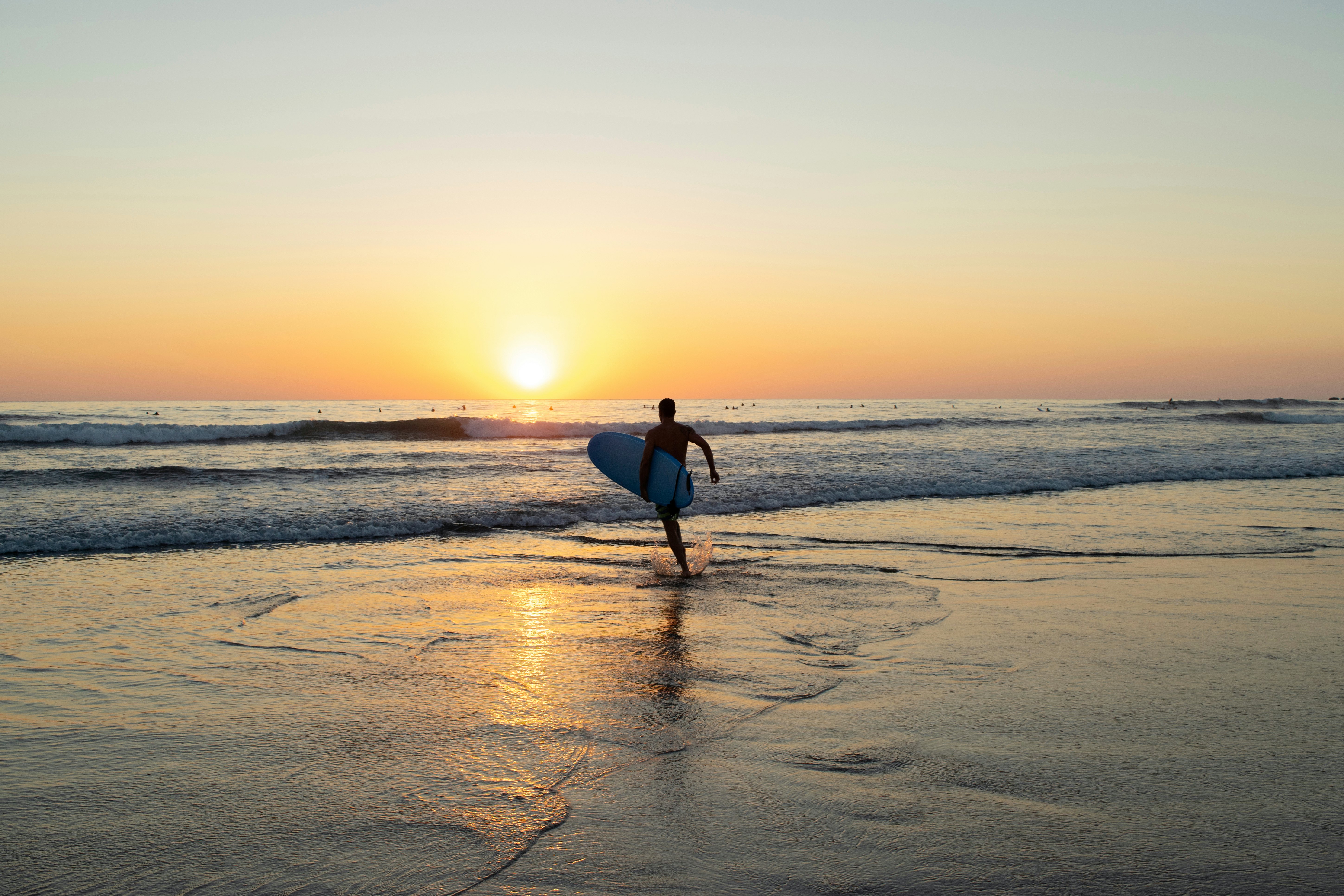
7. Nosara, Costa Rica
Best waves for beginners
After years of living in the shadow of Tamarindo, Nosara is finally hitting the big time. Regulars will lament the fact that the secret is out – yet there’s no way that such a prime surf destination could remain under the radar in Costa Rica, especially with its epic offering for total beginners.
Playa Guiones is the jewel in the crown. A soft curve of a bay that angles ever so slightly due southwest into the Pacific, it’s a swell magnet with a kaleidoscope of breaks that form on the ever-shifting sandbanks.
Low tide can get crunchy and big, but the rising water turns on the goods for learners, bringing glassy green waves out back and plenty of whitewash.
The town? Think Tamarindo 20 years back. Big names like Selina are now in the mix, but you can also find jungle-shrouded B&Bs inhabited by howler monkeys a short walk from the waves of Guiones. The Sunset Shack and Ride On Beach House are especially well rated.
Getting to Nosara: Direct buses from San José take up to 5 hours, while buses from Liberia take about 3 hours. Transfers should be done in a 4WD as some of the roads into Nosara remain unpaved.
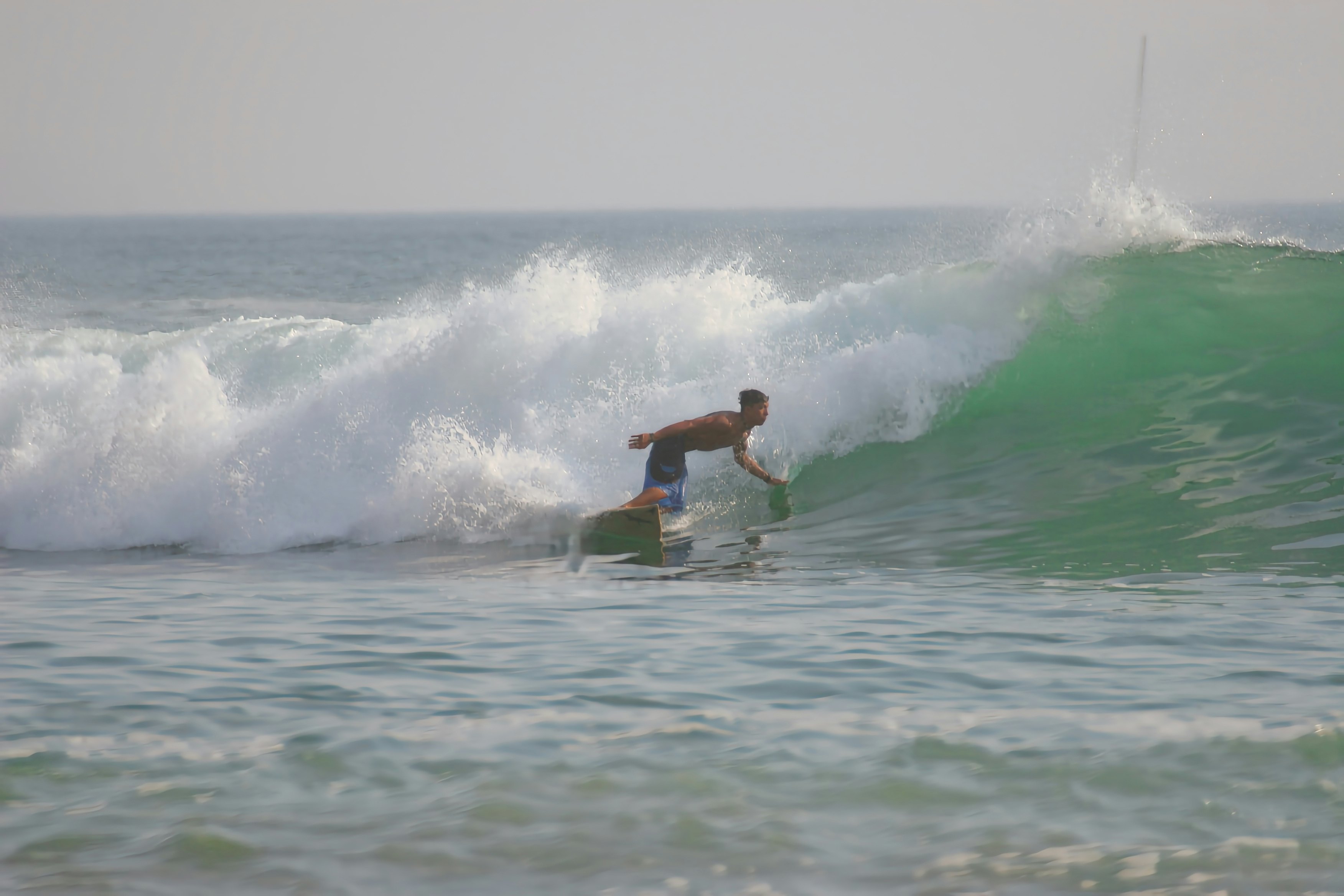
8. Playa Maderas, Nicaragua
Best A-frame for lots of levels
There are plenty of awesome surf bays running north and south from San Juan del Sur (SJDS) in southern Nica, but Playa Maderas, home to one of the most fantastic A-frames in the whole region, really stands out. A dream for intermediates and up, it’s rideable left and right, and sometimes even hollows out to give mini barrels.
Early risers and low-tide surfers will be rewarded with emptier lineups in a region that can get crowded with both day-tripping surf schools out of SJDS and the local crews.
Alternatively, you can ask a local guide if they’ll reveal the secret spots between the town and Playa Yankee, toward the Costa Rica border.
It’s tempting to stay in San Juan del Sur and travel up to Maderas whenever you want to surf. But that would mean missing out on some of the fantastic camps, like Buena Vista Surf Club and its yoga deck perched above the coastal jungles.
Getting to Playa Maderas: First, aim for San Juan del Sur by taking the direct bus from Managua via Rivas. Then head onward to Playa Maderas by taxi or – even more fun – water taxi.









